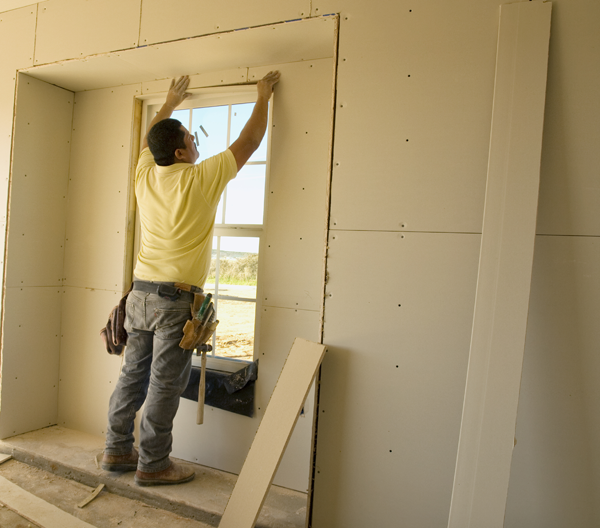Plaster Repairs Bedord NY

What type of plaster is on your walls?
Historic plaster almost sounds like a contradiction in terms. Plaster by its nature is durable and functional, but it’s also prone to deterioration if not maintained carefully throughout its lifespan. Bedford, NY and surrounding areas are well known for their historic buildings built invariably with plaster walls; modern wallboard construction didn’t begin until the early 20th century. These historic buildings are still in use today because of careful attention, repair, and restoration from craftsmen like those at Designs Unlimited.
Types of Plaster
The National Park Service, an organization in charge of maintaining many historical buildings, identifies two materials predominantly used in making plaster for interior walls—lime and gypsum.
“Plasterers in North America have relied on two materials to create their handiwork—lime and gypsum. Until the end of the 19th century, plasterers used lime plaster. Lime plaster was made from four ingredients: lime, aggregate, fiber, and water. The lime came from ground-and-heated limestone or oyster shells; the aggregate from sand; and the fiber from cattle or hog hair. Manufacturing changes at the end of the 19th century made it possible to use gypsum as a plastering material. Gypsum and lime plasters were used in combination for the base and finish coats during the early part of the 20th century; gypsum was eventually favored because it set more rapidly and, initially, had a harder finish,” they explain.
Lime, aggregate, fiber, and water made for a lumpy, coarse mix, but these materials reinforced the plaster and made the wall material durable. After a couple of coats of this mix, a thin surface coat, or “skim” coat, of a much thinner, less lumpy plaster was smoothed over the rougher layers to create a smooth attractive finished wall surface.
Lime plaster had its disadvantages. Lime plaster takes a much longer time to dry completely, delaying the application of paint or wallpaper. Lime plaster may also react with the moisture in the air if not mixed promptly or correctly. Lime plaster fell out of favor when gypsum plaster became more popular.
Gypsum offered builders an alternative to lime plaster that greatly reduced time and labor and increased functionality. The NPS says, “Gypsum begins to cure as soon as it is mixed with water. It sets in minutes and completely dries in two to three weeks. Historically, gypsum made a more rigid plaster and did not require a fibrous binder. However it is difficult to tell the difference between lime and gypsum plaster once the plaster has cured.”
Gypsum, however, is also sensitive to moisture, but in different ways than lime. Gypsum is more prone to moisture and water damage, and is more brittle than lime plaster.
What type of plaster is on your walls?
The NPS advises, “In rehabilitation and restoration projects, one should rely on the plasterer’s judgment about whether to use lime or gypsum plaster. In general, gypsum plaster is the material plasterers use today.”
Designs Unlimited is experienced in improving and restoring the interior surfaces of your Bedford home with professional plaster repair or replacement. New home construction and historical preservation projects throughout Westchester and Fairfield counties are performed by trained Designs Unlimited craftspeople experienced in plaster restoration, wallboard installation, taping, and painting.
Designs Unlimited offers complete decorating and restoration services for plaster and sheetrock walls in Westchester and Fairfield counties, please call us at 914-276-0439 or 203-869-9595 to speak with a licensed professional sheetrock and plaster company.
